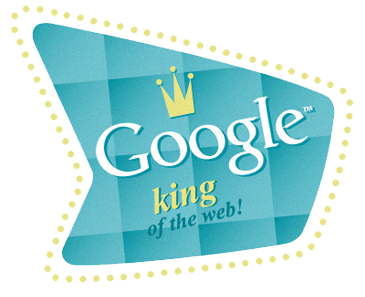At least quarterly, it’s a good idea to find out what’s no longer
working in different parts of digital marketing, particularly in
fast-moving areas like social. This week, we’ll talk about what’s no
longer working in social media, then we’ll move on to what’s new. And in
our next series, we’ll also talk about search.
Before we proceed though, it is worth mentioning that participating in
social media without a plan is asking for trouble. Really think about
why you’re using social and what you hope to achieve. More visibility?
An increase in website visitors? What are they supposed to do when they
get to your website? Is your blog connected to your lead capture system?
Also think about the role of social in your overall online strategy,
whether it’s part of branding, marketing or customer service.
1. Blogging
It’s often forgotten that blogs were among the first social media tools – the best we’d had available since the online bulletin board or forum. The ramp-up to slow-down theory of blogging is no longer working. You can’t blog daily for six weeks, then slow down and blog when you “have time” and expect the same results.
1. Blogging
It’s often forgotten that blogs were among the first social media tools – the best we’d had available since the online bulletin board or forum. The ramp-up to slow-down theory of blogging is no longer working. You can’t blog daily for six weeks, then slow down and blog when you “have time” and expect the same results.
Studies are now showing that ramping up to posting even every other day
increases sales. So wake up that dead blog.You can start by asking
people who have subscribed via email what they’d like to learn about.
Try doing more shorter, pithier posts, then one in-depth post a week.
2. Twitter
There was a time you could get away with broadcasting links into the general noise of Twitter, and be noticed due to the curiosity factor of Twitter’s firehose, and the fact that Google would pick up your tweets in real time, and even show them in real time on trending searches.
2. Twitter
There was a time you could get away with broadcasting links into the general noise of Twitter, and be noticed due to the curiosity factor of Twitter’s firehose, and the fact that Google would pick up your tweets in real time, and even show them in real time on trending searches.
Now, not only has the Twitter firehose been hidden for years now, but
Google’s relationship with Twitter has changed – no more real time
tweets on hot searches.
Besides, Twitter was never meant to be a broadcast medium and most
people ignore much of what is on their incoming streams, or whittle them
down to a manageable level, full of only the people they most want to
interact with frequently. Instead of trying to manage my full incoming
Twitter stream,
I look at my Twitter lists, hashtags, and people who I’ve set to mobile notifications first. Most people on Twitter now have a system similar to this or a custom
timeline – being followed is no longer enough to get noticed. You must provide value, and shouting “LOOK AT ME AND MY STUFF” isn’t doing it anymore.
Pick some non-competing colleagues (or even the competition if you’re
confident) and share their most helpful content 6 to 8 times for every
time you talk about yourself. I personally find that I get a lot more
attention when I’m ready to talk about myself if I share my community
with others.
Screen some Twitter chats related to your topic if you have trouble finding out who these people are.
3. Facebook
Oh #facepalm. Where do I begin with what doesn’t work on Facebook?
3. Facebook
Oh #facepalm. Where do I begin with what doesn’t work on Facebook?
I’m tempted to say “everything”. For Pages, reach is down, because
apparently Facebook differs from Twitter in that it either doesn’t see
the value, or doesn’t have the capability, to show you everything you
or your connections are subscribed to in the the public stream.
You’ve got to pay to play and even that can give you dismal results.
Ever since Facebook began to take away some of pages killer features, I
haven’t been the fan I once was. It used to be easy to get prospects to
opt-in to be contacted outside Facebook, to create posts natively using
the Notes app, and many other things personal profiles have been able to
do, or still can.
If you’re using your personal profile for personal interaction, it’s
best to keep it that way. But if you’ve been using your profile’s
ability to make certain information visible or hidden to certain groups
via the refreshed Lists feature, that may be your best bet for
visibility of informational posts that aren’t commercially heavy.
4. LinkedIn
LinkedIn used to have a kick-ass section called LinkedIn Answers. You could get a crazy amount of visibility by logging in once a quarter and answering questions until you were one of the top three in a sub-niche. I used to get very high quality client leads this way.
4. LinkedIn
LinkedIn used to have a kick-ass section called LinkedIn Answers. You could get a crazy amount of visibility by logging in once a quarter and answering questions until you were one of the top three in a sub-niche. I used to get very high quality client leads this way.
Now LinkedIn is letting more people into its Influencers program. Many
don’t see the appeal to writing to an audience they already have.
However, if you promote your LinkedIn posts as you would any other
content marketing item or guest post, you will find that your audience
expands outside the contacts you already have.
Test this out by applying to their program – if you’re accepted, test
with a reworked blog post if you don’t have any new content on hand.
5. YouTube
Trying to grow your YouTube audience without interaction is much harder than it used to be. In years past, you could get away with just optimizing for search and exposing your videos to your own subscribers or your blog audience.
5. YouTube
Trying to grow your YouTube audience without interaction is much harder than it used to be. In years past, you could get away with just optimizing for search and exposing your videos to your own subscribers or your blog audience.
Now, the action on your page is part of the criteria for getting ranked,
according to my favorite source on video SEO, ReelSEO (get it? Why
can’t I think of things like that?) A dead channel is an ignored channel. Get out there and find the active
users in your space. Delight them and lure them to your channel.
6. Google+
So here’s a weird one for you – the main thing not working for Google+ is ignoring it.
6. Google+
So here’s a weird one for you – the main thing not working for Google+ is ignoring it.
If you’ve hated Google+ for years, you had good reason. With lots of
abandoned profiles and few of the features that now exist, 2011 was way
too early to speculate about its potential.
However adoption among more regular people, business owners, bloggers,
and even Android users is making Google+ the place to be, not to mention
the ability to leverage additional spots in Google’s universal search
rankings, or the personalized rankings of people you’re connected to via
the site.
If for no other reason than to get your OWN blog more personalized
rankings by being connected to more people than your nearest
competition, Google+ is a must if Google search is part of your
marketing strategy.
You may hate it, but even though we may hate accounting, we still make
sure it gets done. Build out your profile and invest just 5 minutes a
day making new connections on Google+ – if you do it right, it’ll be
worth your while.
The takeaway
Sometimes it feels like our social media efforts are failing. And sometimes, this is actually true. The key question to ask isn’t IF there is failing but WHAT is failing. Before you give up, make sure the point of failure isn’t your strategy or technique.
The takeaway
Sometimes it feels like our social media efforts are failing. And sometimes, this is actually true. The key question to ask isn’t IF there is failing but WHAT is failing. Before you give up, make sure the point of failure isn’t your strategy or technique.
For More Information about What’s new in social media and what is broken

